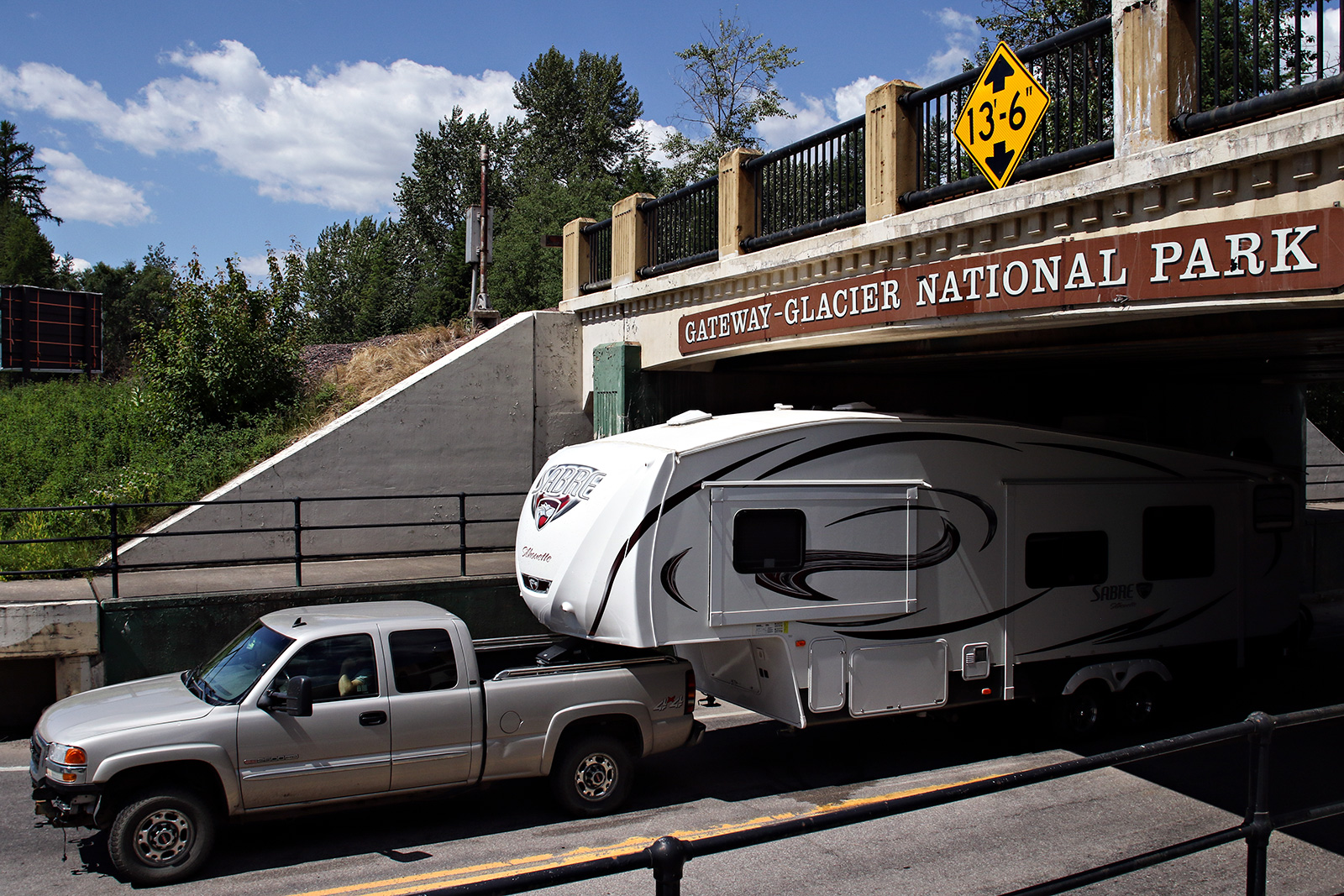Every year, roughly a half-million motorists enter Glacier National Park through the small village of West Glacier, passing beneath the BNSF Railway overpass on their way to explore the iconic Going-to-the-Sun Road. As the de facto portal to the “crown jewel” of the National Park Service, the historic overpass serves as most visitors’ first impression of Glacier.
So, in 2019, longtime West Glacier residents Val Parsons and Terry Divoky grew alarmed by the deterioration of the underpass and the surrounding area. Agreeing that a restoration project was long overdue, Parsons and Divoky set about cobbling together a grassroots working group of community members and the West Glacier Historic Gateway Project was born.
In addition to resolving safety issues, the group’s founding members described the entrance as an aesthetic eyesore. It was, they said, “overrun with invasive weeds” and looked like “a long-forgotten industrial space – not a great welcome to one of America’s most beautiful National Parks, or one that West Glacier residents took pride in.”
“It was clear to the group that the process was going to be complicated, lengthy and costly,” according to project co-planner Sharon Bengtson. “Taking a long-term look at the restoration needs and what it would mean to the area, the project was broken into workable phases.”
Launched by volunteers and untethered to an official nonprofit organization or fundraising arm, the group established a natural connection to Columbia Falls-based trail-building nonprofit Gateway to Glacier Trails, whose 10-mile paved bicycle and pedestrian path begins in Hungry Horse and ends at West Glacier, right at the underpass.
“It made sense for Gateway to Glacier Trails to become the nonprofit and fiscal sponsor for this project,” said Parsons, the founder of the Gateway to Glacier Trails and a participant in the underpass project. “As a resident of West Glacier, I saw the need for the Gateway to Glacier Trail years ago, and, alongside fellow residents, I see a great need for this restoration project.”
The first phase of the project was completed in the spring of 2022 by the Montana Department of Transportation, with a focus on safety work, repairing the underpass sidewalk and mending the bike-trail interface, according to Parsons. The second phase of the project involves landscape cleanup and revitalization.
Decades ago, Parsons said the West Glacier Garden Club planted flowers and spray-painted the underpass, but those efforts have since been obscured by overgrown vegetation and peeling paint. The current project aims to restore those early landscaping efforts by removing weeds, gravel and damaged plant material.
The restoration efforts have largely been made possible by the donations of local businesses and organizations, Parsons said.
Last summer, the Center for Native Plants added hardy native grasses, perennials, and shrubs to the western flank of the underpass with careful consideration of the community history and the extreme conditions on the site. They also donated all site planning and design hours and provided plant material at a significant discount. Kalispell Daybreak Rotary Club donated $8,000 of the $18,000 that was needed for the west-side landscaping, while also organizing volunteer workdays. These early volunteer days saw club members and volunteers pulling weeds, pruning overgrown bushes and trees and trucking away loads of brush. Last fall, volunteers purchased and installed snow fencing and protective ground cloth to protect the landscape and make spring cleanup more efficient.
Currently, project fundraising to upgrade the east flank of the entrance landscaping is underway.
“We hope the work can be completed in 2023 after the funds are raised,” according to project co-planner Jill Rocksund.
The total funds needed for the project’s completion amount to $5,188, Rocksund said, which includes two additional years of weed control for the entire site. There will also be watering needs for the next several years during the heat of summer.
The third phase of the project, which will unfold this summer and fall, involves refurbishing the BNSF overpass leading into West Glacier and Glacier National Park, sandblasting concrete and metal beams, repairing spalling concrete, applying a graffiti-washable sealer, repairing metal and handrails where needed, priming, painting, and replacing the worn and fading welcome sign on the underpass.
The final phase will also be the most complicated, organizers said, as it also involves working with federal, state and private partners, including BNSF, to meet specific standards, procedures and materials required.
Mary T. McClelland, a resident and community organizers, said the project wouldn’t have been possible without the assistance of Kalispell Daybreak Rotary Club, as well as businesses including Pursuit, Glacier Raft, Glacier Highland, Hungry Horse Liquor, Glacier River Ranch, and Wild River Adventures. Organizations such as the Glacier Park Conservancy and individuals donated hundreds of dollars to raise the rest of the funds, she said.
“Without the investment of these local businesses, volunteers and community members, we would not have been able to make the exciting progress we’ve seen in the last year,” McClelland said. “We can’t wait to see what 2023 holds.”
To volunteer, learn more or donate via PayPal to the West Glacier Historic Gateway Project, visit www.gatewaytoglaciertrail.com/glacierunderpass.
